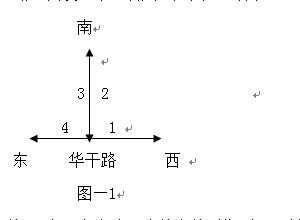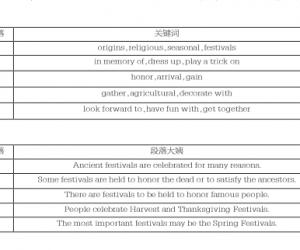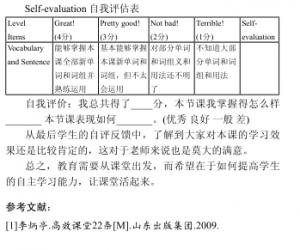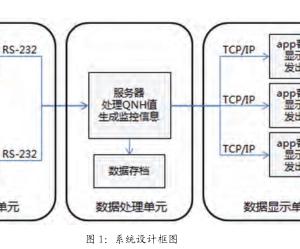The nature and characteristics of poetic metaphor: Taking the poetic metaphors i
Abstract: Poetic metaphor is a conceptual structure, a means of cognition and
conceptualization. Poetic metaphor is the cognitive means, which the poets use
to know about things and express emotions; and it is the external manifestation
of poetic cognition of the poets. And this means of poetic cognition and conceptualization has the following
characteristics: Romantic, obscurity, as well as personal touch.
Key words: nature; characteristics; poetic metaphor
1. Introduction
To study anything, the first question
should be answered is what is the nature of this thing. Therefore, in order to
make a further study for poetic metaphor, firstly, we must know about the
nature of poetic metaphor. For this reason, this paper will explore the nature and
unique characteristics of poetic metaphor from cognitive perspective.
2. The nature of poetic metaphor
The traditional rhetoric view of metaphor saw the metaphor just as a language expression
skill. For most
people, metaphor is a device of the
poetic imagination and the rhetorical flourish——a matter of extraordinary
rather than ordinary language (Lakoff & Johnson, 1980:4). But the fact is
not the case. Essentially, metaphor is a conceptual structure, it is the
people's means of cognition and conceptualization. Poetic metaphor as a
category of metaphor, it is also a conceptual structure, a means of cognition
and conceptualization. Poetic metaphor is the cognitive means, which the poets
use to know about things and express emotions; and it is the external
manifestation of poetic cognition of the poets. The poets’ poetic cognition
achieves through the poetic metaphor. Therefore, the poetry creation cannot be
separated from the poetic metaphor, which is an important means of poets’
cognition and conceptualization. The ordinary conventionalized metaphors are
the basis of poetic metaphors, and they play an extremely important shaping role in the
creation of poetic metaphors. General conceptual metaphor is thus not the
unique creation of individual poets but is rather part of the way members of a
culture have of conceptualizing their experience (Lakoff & Turner, 1989:9). Although the ordinary conventionalized metaphor
plays an extremely important role in the creation of poetic metaphor; however,
the poetic metaphor is not the same with ordinary conventionalized metaphor. Poetic uses are often
conscious extensions of the ordinary conventionalized metaphors, poets may call
upon our knowledge of basic conceptual metaphors in order to manipulate them in
unusual ways (Lakoff & Turner, 1989:53-54). Typically, the poetic metaphor is composed of two or more ordinary
conventionalized metaphors. Therefore, we can say that the ordinary
conventionalized metaphor we live by is also the poetic metaphor lives by.
Therefore, we can say that the
essence of poetic metaphor is cognition; it is an important means, which the
poets use to construct their poetic concepts and achieve the conceptualization.
In addition, the poetic metaphors construct most of the poetic concept system.
The reason that the poetic metaphors can construct most of the poetic concept
system is that the poetic metaphors, whether external or internal, themselves
are highly systematic. On one hand, a poetic metaphor can derive many metaphor expressions;
on the other hand, different poetic metaphors can describe different aspects of
the same entity, so as to construct a complete concept system.
3. The characteristics of poetic metaphor
The poetic metaphor,
as an independent category of metaphors, has many characteristics, which are
different with other metaphors. The distinct characteristics of poetic metaphor
include: Romantic, obscurity, as well as personal touch.
The so-called romantic refers that the
poetic metaphor is full of fantasy; many things, which are impossible in
daily life, will become possible in poetic metaphors. When describe the real
world, poetic metaphor focuses on the subjective inner world and uses magnificent
imagination, exaggerated way, and passionate language to create typical image. Such
as in the poem Chant white begonia in
A Dream of Red Mansions, the poet
uses a lot of poetic metaphors to praise the white begonia. The poet imagined
that the white begonia should be grown in an environment, which uses the ice as
the soil and uses the white jade basin as flowerpot. The poet uses the images
of “ice” and “white jade basin” to metaphorize the pure white of the white begonia;
and this is full of fantasy and exaggeration. In addition, the poet also uses
the image of “white gown”, which is made by the goddess of the
The so-called obscurity
refers that the poetic metaphor will not write about things directly; in literally, it may refer this thing, but its real
meaning may refer another thing. In other words, the poetic metaphor often makes
readers feel that its real meaning is uncertain. In order to gain the real
meaning of poetic metaphor, readers need to think and experience it carefully before interpreting its real
meaning. And different readers often have different interpretations. For one poem,
the reason of why different readers often have different interpretations is that the
poem contains a certain number of poetic metaphors, which are obscurity. Such
as in the poem Judgment of Jia Yuanchun in A Dream of Red
Mansions, this poet uses several poetic metaphors, which are obscurity;
and the most obscurity one is about “三春 (Shan Chun; 三three; 春spring)”. Since A
Dream of Red Mansions was published, the readers have made a lot of interpretations for “三春”. So far, there
are four interpretations, which are widely recognized. The first one is that “三春” refers to the three months of spring in China (In
ancient China, in proper order, the three months of spring are called: Meng
spring, Zhong spring, and Ji spring); the second one is that “三春” refers to three spring: the spring of the first
year of Qianlong period, the spring of the second year of Qianlong period, and the spring of
the third year of Qianlong period; the third one
is that “三春” refers
to three person: Jia Yingchun, Jia Tanchun, and Jia Xichun; the fourth one is that “三春” refers to the spring of any year. This precisely
reflects the obscurity of the poetic metaphor. Countless possible interpretations increase the
artistic conception of poetry, and leaving a broad imagination to the readers. Readers only read carefully
and experience carefully so as to understand its real meaning.
The so-called personal touch refers
that the poetic metaphors are constructed
by the poet based on the ordinary conventionalized
metaphors; so, the poetic metaphor will be marked the poet's own strong
personal touch. The poetry creation is done by
particular person, and different poets will often
contain their own unique characteristics. For a certain thing, different
poets tend to create different poetic metaphors to identify different emotions
and show a different personality. Such as the poems of chrysanthemum in A Dream of Red Mansions, in the poems, all of the poets use the chrysanthemum
to metaphorize people. However, different poets have different interpretations
for the chrysanthemum, so as to construct poetic metaphors with strong personal
touch, as well as expressing different personal emotions. The poem Thinking of the
chrysanthemum, which was written by Xue
Baochai, expresses the emotion of melancholy of lonely Jour; the poem Planting
chrysanthemum, which was written by Jia Baoyu, expresses the emotion of
wanting to be far away from the world of mortals; and the poem Questioning the chrysanthemum, which was
written by Lin Daiyu, expresses the emotion of gentleman feelings and hidden bitterness.
All of the three poems use the chrysanthemum to construct poetic metaphors;
however, different poets have different perspective, and constructed different
poetic metaphors, as well as express different emotions. Thus, whether the poetry or the
poetic metaphor contained in the poetry has a distinct personal touch.
4. Conclusion
Poetic
metaphor is a conceptual structure, a means of cognition and conceptualization. It is a means of poetic cognition,
which the poets use to understand and conceptualize the real world. And this means
of poetic cognition and
conceptualization has the following characteristics: Romantic,
obscurity, as well as personal touch.
Reference:
Cao, X. Q., & Gao, E. (1999). A
dream of red mansions. Beijing: People's Literature Publishing House.
Geeraerts, A.
(2010). Theories of lexical semantics.
New York: Oxford University Press.
Lakoff, G., &
Johnson, M. (1980). Metaphors we live by. Chicago: The University of Chicago
Press.
Lakoff, G. & Turner, M.
(1989). More than Cool Reason—A Field
Guide to Poetic Metaphor. Chicago: The University of Chicago Press.
Lakoff, G. (1987). Women, Fire, and Dangerous Things: What
Categories Reveal about the Mind. Chicago: the University of Chicago Press.
Lakoff,
G. (2002). Moral politics: how liberals and conservatives think. Chicago: The
University of Chicago Press.
Xiao, J. Y. 2009. The study of English translation of
metaphors in A Dream of Red Mansions. Beijing: China Social Sciences Press.
Yang, X. Y. & Gladys, Y.
(trans.). (1999). A Dream of Red Mansions.
Beijing: Foreign Languages Press.






















